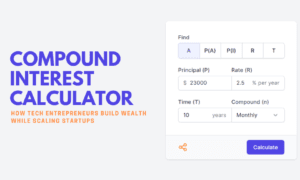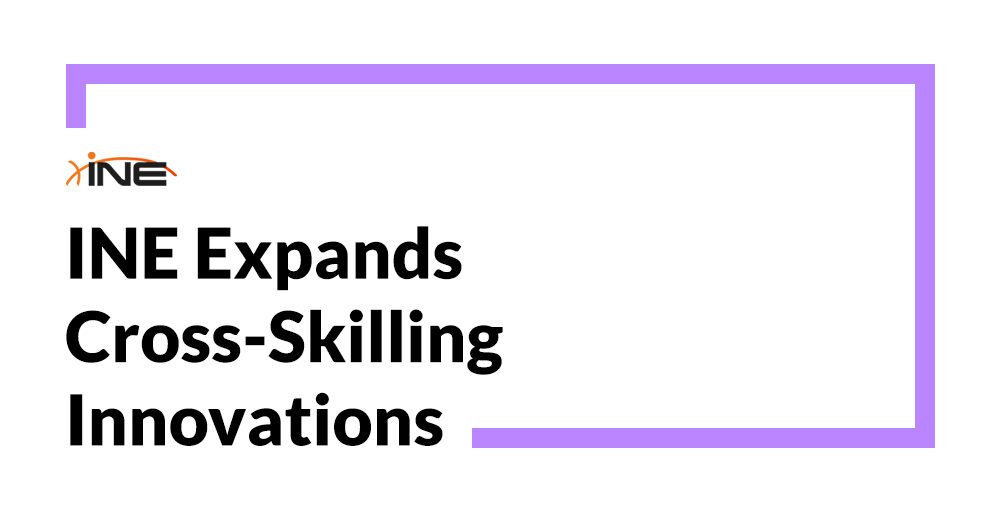The Mathematics of Exponential Wealth
Warren Buffett, one of history’s most successful investors, built his $100+ billion fortune not through get-rich-quick schemes but through systematic application of compound interest over seven decades. His advice: “Someone’s sitting in the shade today because someone planted a tree a long time ago.”
Most startup founders focus intensely on revenue growth and product development. Yet they often neglect the parallel track of personal wealth building that could provide financial security regardless of startup outcomes. Understanding compound interest—how money grows exponentially when returns generate their own returns—transforms both personal financial strategy and business reinvestment decisions.
The math behind compounding is deceptively simple, but its long-term effects are dramatic. A $10,000 investment growing at 10% annually becomes $25,937 after ten years, $67,275 after twenty years, and $174,494 after thirty years. The same amount at 15% returns yields $40,456, $163,665, and $662,118 respectively. These aren’t linear progressions—they’re exponential curves that accelerate over time.
For tech entrepreneurs, compound interest principles apply across three critical domains: personal investment portfolios that build financial independence, business profits that reinvest for accelerated growth, and startup valuations that compound through successive funding rounds. Mastering these dynamics separates founders who build lasting wealth from those who work intensely without accumulating meaningful assets.
The Mathematics That Makes Millionaires
Compound interest follows a straightforward formula: A = P(1 + r/n)^(nt), where A represents the final amount, P is the principal, r is the annual interest rate, n is the compounding frequency, and t is time in years. While the formula appears technical, understanding the underlying dynamics matters more than memorizing the equation.
The power lies in three multiplicative factors working together. First, your initial principal matters—larger starting amounts generate more absolute gains. Second, your rate of return dramatically affects outcomes—small percentage differences compound into massive disparities. Third, time acts as the great multiplier—the longer money compounds, the more dramatic the acceleration.
Consider a practical scenario. You invest $50,000 in a diversified portfolio averaging 8% annual returns, compounded monthly. After one year, you have $54,159. After five years, $74,295. After ten years, $110,768. After twenty years, $246,688. After thirty years, $549,191. The final decade alone generates more absolute gains than the first two decades combined. This acceleration defines compounding’s power.
Compounding frequency subtly but significantly affects results. Monthly compounding calculates interest twelve times yearly, reinvesting each month’s gains. Daily compounding happens 365 times annually. A 10% annual rate compounded monthly yields 10.47% effective annual return. Compounded daily, it yields 10.52%. The differences seem small initially but compound into meaningful amounts over decades.
For tech entrepreneurs earning substantial salaries or exit proceeds, these principles matter immensely. A 28-year-old founder who sells a startup for $500,000 after taxes and invests the entire amount at 9% average returns will have $3.87 million by age 50, $11.15 million by age 60, and $32.13 million by age 70—without adding another dollar. The same founder who waits until age 38 to invest that amount reaches only $1.82 million by 70. Starting ten years earlier generates $30 million more. Time dominates the equation.
Personal Wealth Building for Founders
Tech entrepreneurs face unique wealth-building challenges. Income can be highly variable—minimal during bootstrapping, substantial during well-funded growth phases, potentially transformative after exit events. This volatility makes systematic wealth accumulation difficult without intentional strategies.
The foundation starts with emergency reserves. Before aggressive investing begins, establish six months of living expenses in accessible savings. This buffer prevents forced liquidation of long-term investments during lean periods. Many founders skip this step, then face liquidity crises that derail their financial plans.
Once reserves exist, systematic investment becomes paramount. Automate monthly transfers from checking to investment accounts. Even $500 monthly invested at 8% returns generates $30,627 after five years, $91,473 after ten years, and $298,073 after twenty years. The consistency matters more than the amount. Founders who automate the process build wealth regardless of business ups and downs.
Tax-advantaged accounts maximize compounding efficiency. In the United States, 401(k) and IRA contributions grow tax-deferred, letting your full returns compound without annual tax drag. A $6,500 annual IRA contribution at 8% returns grows to $148,780 after twenty years in a traditional IRA (taxed upon withdrawal) or remains tax-free forever in a Roth IRA. For high-income tech professionals, these accounts provide legal tax arbitrage that dramatically enhances wealth accumulation.
Asset allocation decisions profoundly impact long-term outcomes. A portfolio invested entirely in broad stock market index funds historically returns about 10% annually but experiences significant volatility. A 60/40 stock-bond mix returns closer to 7-8% with reduced volatility. Younger founders typically tolerate more risk for higher returns. The key insight: staying invested through market downturns matters more than perfect timing. Compound interest requires time, and time requires patience during inevitable corrections.
Calculate your wealth accumulation trajectory by entering your starting amount, monthly contributions, expected return rate, and time horizon. Experiment with different scenarios to understand how each variable affects outcomes.
Business Reinvestment Strategy
Compound interest principles don’t just apply to personal portfolios—they’re equally powerful for business growth. Profits reinvested into customer acquisition, product development, or infrastructure improvements can compound revenue growth rates just as financial returns compound investment gains.
Consider two hypothetical SaaS startups, both generating $100,000 monthly profit. Company A distributes all profits to founders, maintaining current operations but not reinvesting. Company B reinvests 70% of profits into sales and marketing, converting those dollars into $1.20 of incremental annual recurring revenue. After one year, Company A still generates $100,000 monthly. Company B, having reinvested $840,000, now generates $184,000 monthly.
The compounding accelerates. In year two, Company B reinvests 70% of its new higher profit level, generating additional growth. After five years, Company B’s monthly profit reaches $673,000 while Company A remains at $100,000. The founders of Company B, despite taking home less cash early on, have built an asset worth ten times more in valuation.
This dynamic explains why venture capitalists push for aggressive reinvestment over profitability. A profitable, slowly growing company might be worth 3-5x revenue. A rapidly growing company, even if unprofitable, might command 10-20x revenue. The compounding growth rate creates exponentially more valuable enterprises.
Smart reinvestment requires discipline. Every dollar allocated must generate measurable returns. Marketing spend should track to customer acquisition cost versus lifetime value. Product investments should demonstrate user engagement improvements. Infrastructure investments should enable scaling that was previously impossible.
The optimal reinvestment rate varies by company stage. Early-stage startups often reinvest 80-100% of gross profit into growth, prioritizing market position over near-term profitability. Later-stage companies might reinvest 40-60%, balancing growth with demonstrating unit economics. Mature businesses often reinvest 20-40%, generating substantial free cash flow while maintaining competitive position.
Startup Valuation Compounding
Startup valuations themselves compound through successive funding rounds when execution meets market opportunity. A company raising a seed round at $5 million valuation, Series A at $25 million, Series B at $100 million, and Series C at $400 million demonstrates 25x growth over perhaps four years—a compounded annual growth rate exceeding 100%.
Every equity decision involves compound interest thinking. Giving an early employee 0.5% equity in exchange for below-market salary makes sense only if that person’s contributions genuinely accelerate the company’s growth rate. If their work helps the company reach $100 million valuation instead of $60 million, that 0.5% costs founders $500,000 but created $40 million in incremental value.
Dilution mathematics require compound thinking too. Founders who raise $2 million at a $10 million post-money valuation sacrifice 20% equity. If they use that capital to grow company value from $10 million to $50 million before the next round, their remaining 80% stake is worth $40 million—far more than the original 100% of $10 million. Dilution becomes wealth-destructive only when capital raised doesn’t proportionally increase company value.
The timing of liquidity events dramatically affects founder wealth through compounding. A founder who exits a company for $10 million at age 32 and invests the proceeds at 8% returns will have $76 million by age 60. Waiting to build the company to a $30 million exit at age 40 yields only $68 million by age 60. The earlier exit, despite being smaller, compounds longer and wins.
Secondary share sales present another compounding consideration. Founders who sell 10-20% of their equity during late-stage rounds diversify their wealth and reduce risk. That money, invested in public markets, compounds reliably while the remaining equity swings for larger outcomes.
The Power of Starting Early
Time is compound interest’s most valuable input. The difference between starting wealth accumulation at 25 versus 35 exceeds the difference between 8% and 12% returns. This mathematical reality should dramatically influence career and financial decisions for young entrepreneurs.
Consider two tech professionals. Professional A begins investing $500 monthly at age 25, continues until 35 (investing $60,000 total), then stops but leaves money invested at 9% returns. Professional B waits until 35 to start, then contributes $500 monthly until 65 (investing $180,000 total). At age 65, Professional A has $668,000 despite contributing $120,000 less. Professional B has only $556,000. Starting ten years earlier wins because time’s compounding power dominates contribution amount.
Taking slightly higher salary early and investing aggressively compounds better than minimal salary for years, then large investments later. Young founders rationalize delaying investing because “I’ll make so much more later.” This logic fails mathematically—you’ve lost the early compounding years that generate disproportionate long-term value.
Avoiding the Compound Interest Trap
While compound interest builds wealth, it equally accelerates debt destruction. Credit card debt compounding at 18-24% rates can devastate finances faster than investments build them. A $10,000 balance at 21% APR takes 30 years to repay and costs $24,000 in interest. That same $10,000 invested at 8% grows to $100,000. The gap—$110,000—represents compound interest working for versus against you.
Startup founders who take venture debt at 12-15% must ensure their business compounds revenue faster than debt compounds costs. Real estate provides another double edge. Many tech entrepreneurs stretch for expensive homes. A founder paying $8,000 monthly mortgage instead of $4,000 loses $48,000 annually of investable capital. That $48,000 invested annually at 8% grows to $5.9 million over 30 years.
The principle: treat compound interest as seriously when it works against you as for you. Any debt with rates exceeding your expected investment returns should be eliminated immediately.
Real Scenarios: Founders Who Mastered Compounding
Consider a mid-career tech professional’s actual journey. At 28, earning $150,000 as a senior engineer, she maximizes her 401(k) contribution ($22,500 annually), opens a Roth IRA ($6,500 annually), and invests an additional $15,000 annually in a taxable brokerage account—$44,000 total annual investment. At 8% average returns, by age 45 she has accumulated $1.37 million. By age 60, $4.36 million. By age 70, $9.93 million.
At 34, she co-founds a startup, taking no salary for two years while living on savings. The startup succeeds moderately, selling for $8 million when she’s 40. After taxes and employee equity payouts, she nets $2.5 million. Rather than lifestyle inflation, she invests $2 million immediately (keeping $500,000 for home down payment and reserves). That $2 million, combined with her continuing $44,000 annual contributions, grows to $11.8 million by age 60 and $28.4 million by age 70.
Contrast this with a founder who launches a startup at 25, takes minimal salary, invests nothing for fifteen years while chasing a massive exit. The company succeeds dramatically, exiting for $50 million when he’s 40. After taxes and dilution, he nets $15 million. Phenomenal outcome. Yet invested at 8% returns for thirty years until age 70, this grows to $151 million. The first founder, with far more modest earnings, reaches $28 million.
The lesson isn’t that either path is “right.” It’s that compound interest creates multiple paths to substantial wealth. You don’t need unicorn startup exits if you start early, invest consistently, and let time work for you.
Practical Calculator Usage
Compound interest calculators transform abstract concepts into concrete projections. When used properly, they help you make informed decisions by quantifying long-term effects of choices made today.
Start with realistic scenarios. If you currently invest $500 monthly and want to see what happens over 30 years, don’t assume 15% returns. Use 8-10% for stock-heavy portfolios, 6-7% for balanced portfolios, 4-5% for conservative portfolios. Overly optimistic assumptions lead to underfunding and disappointment.
Experiment with sensitivity analysis. Calculate outcomes at 7%, 9%, and 11% returns to understand the range of possibilities. Calculate results contributing $400, $600, and $800 monthly to see how extra contributions affect outcomes. This reveals which variables matter most for your situation.
Use compound interest calculators to evaluate specific financial decisions. Considering a job offering $20,000 more annually? Calculate the difference if you invest that extra $20,000 yearly over twenty years. The calculator reveals that $20,000 annual contributions at 8% returns grow to $915,000. Suddenly that job switch isn’t just about current lifestyle—it’s about a million-dollar decision.
Reverse engineering wealth goals works powerfully. Want $5 million by age 60? You’re 35 now with $100,000 invested. The calculator reveals you need to contribute approximately $5,850 monthly at 8% returns. Too much? Adjust variables. Start with $200,000 and monthly contributions drop to $5,250. Extend the timeline to age 65, and they drop to $3,525.
Conclusion: The Decision That Compounds
Compound interest isn’t just a financial formula—it’s a decision-making framework. Every choice either compounds toward wealth or away from it. Spending $5,000 annually on luxuries you don’t truly value represents $611,000 not accumulated over thirty years at 8% returns. That expensive car payment, that oversized apartment—each compounds into enormous opportunity costs.
The mathematics is unforgiving but also liberating. You don’t need luck. You don’t need genius-level returns. You don’t need a billion-dollar exit. You simply need to understand compound interest, start early, invest consistently, and let time do what only time can do. A tech professional earning solid but not extraordinary income who begins investing at 25 will very likely retire wealthier than a founder who builds a $10 million net worth at 45 but starts from zero.
For entrepreneurs specifically, integrate compound thinking across three dimensions. First, personal wealth: automate investments, maximize time horizon, avoid wealth-destroying debt. Second, business reinvestment: allocate capital only to initiatives that compound value, measure returns rigorously. Third, startup equity: understand how valuations compound through funding rounds, make dilution decisions based on proportional value creation, consider secondary sales for diversification.
The most powerful financial force isn’t luck or genius-level returns or billion-dollar exits. It’s understanding compound interest, starting early, investing consistently, and letting time do what only time can do. A tech professional earning solid but not extraordinary income who begins investing at 25 will very likely retire wealthier than a founder who builds a $10 million net worth at 45 but starts from zero.
Start today, invest systematically, reinvest intelligently, and let mathematics do the rest. Thirty years from now, you’ll appreciate the profound wisdom of starting thirty years earlier.



































